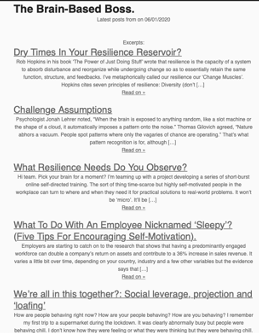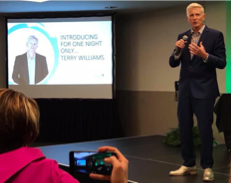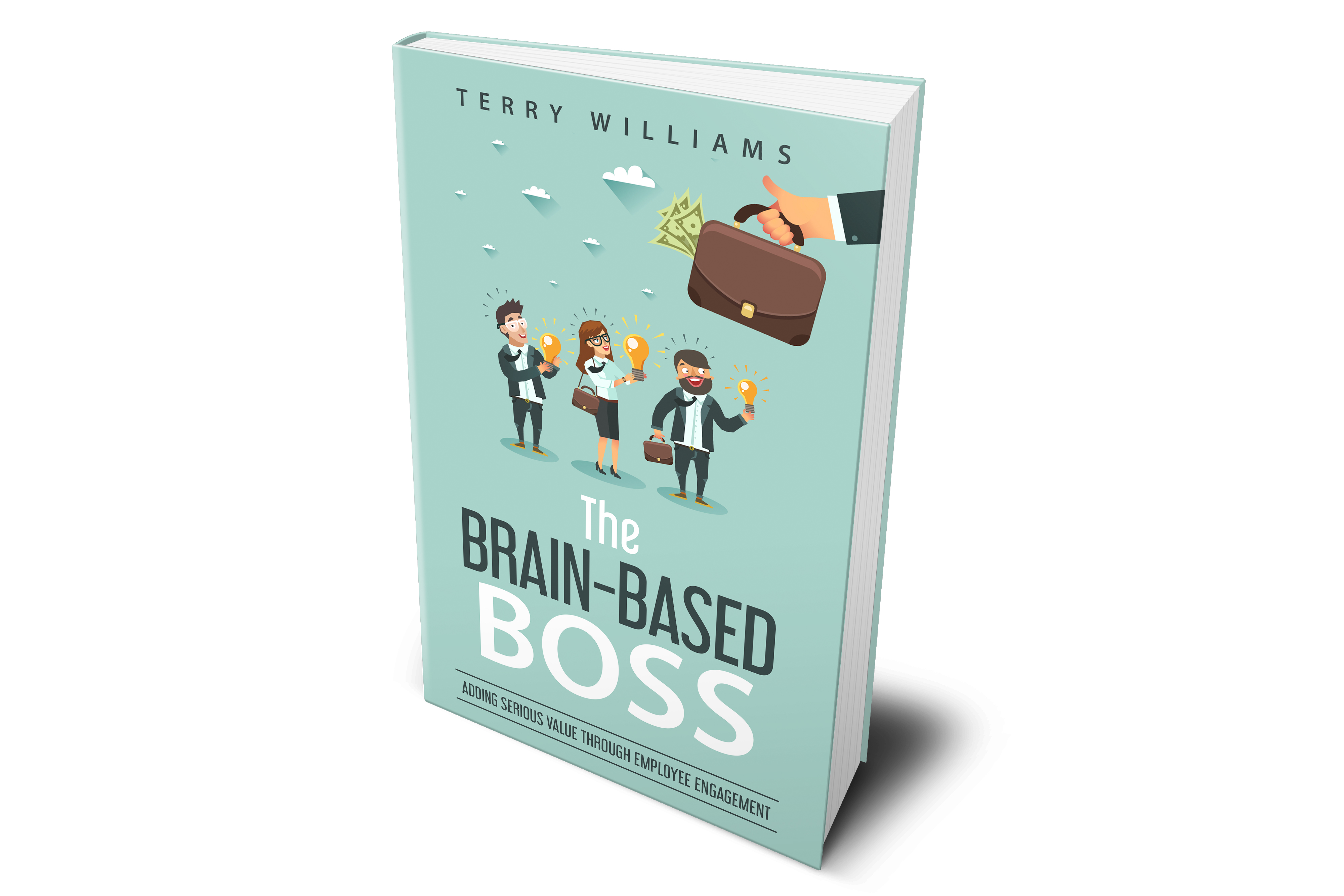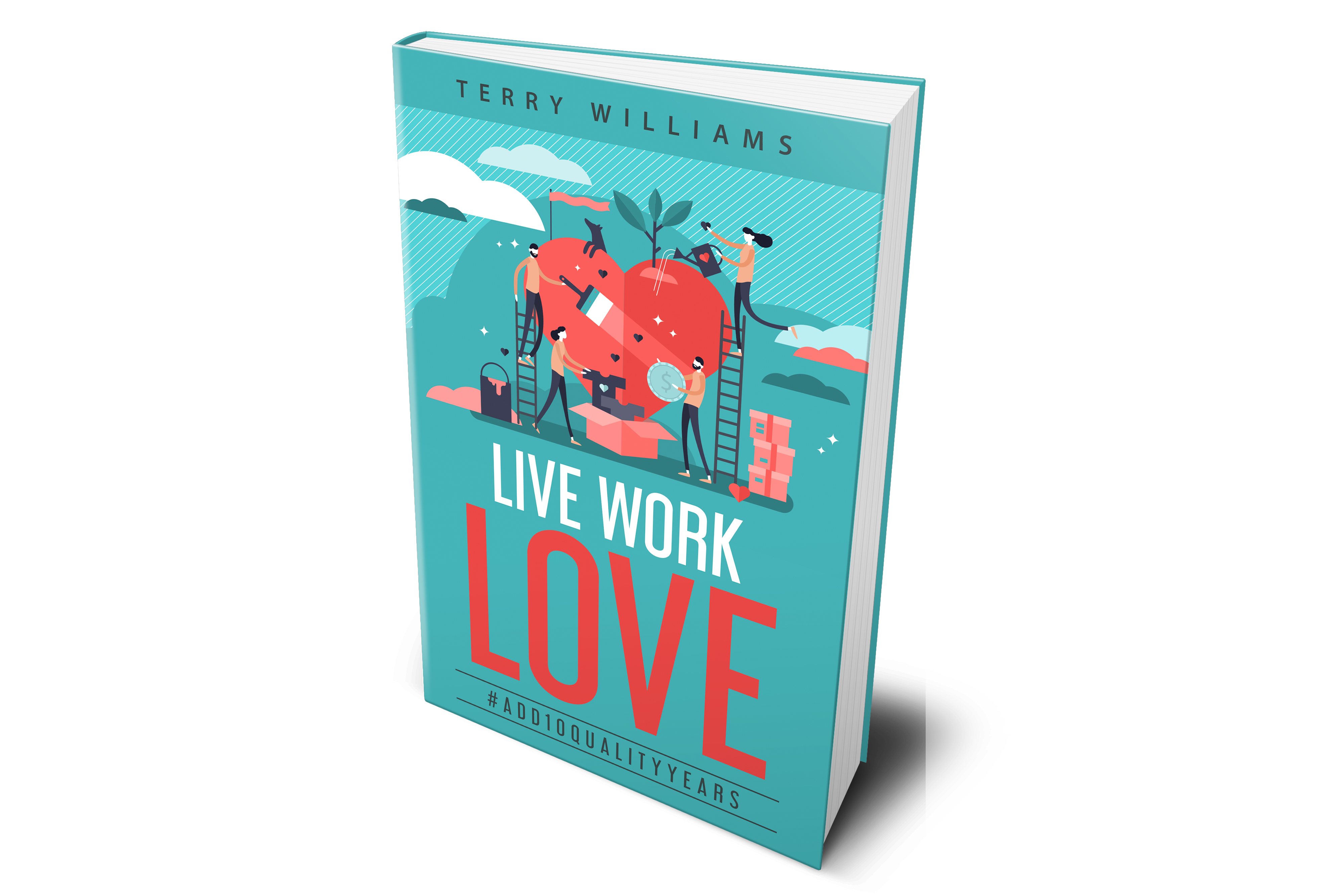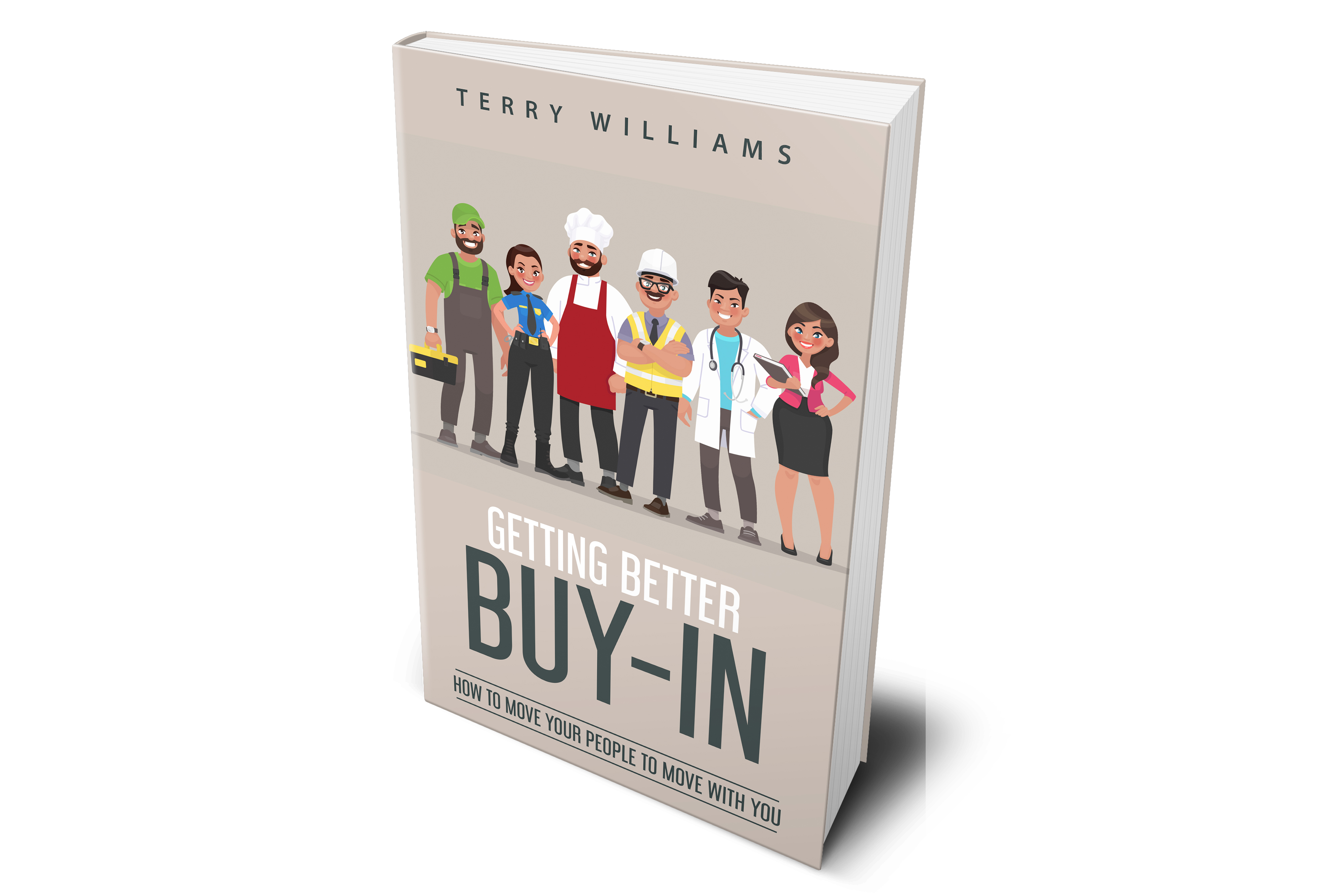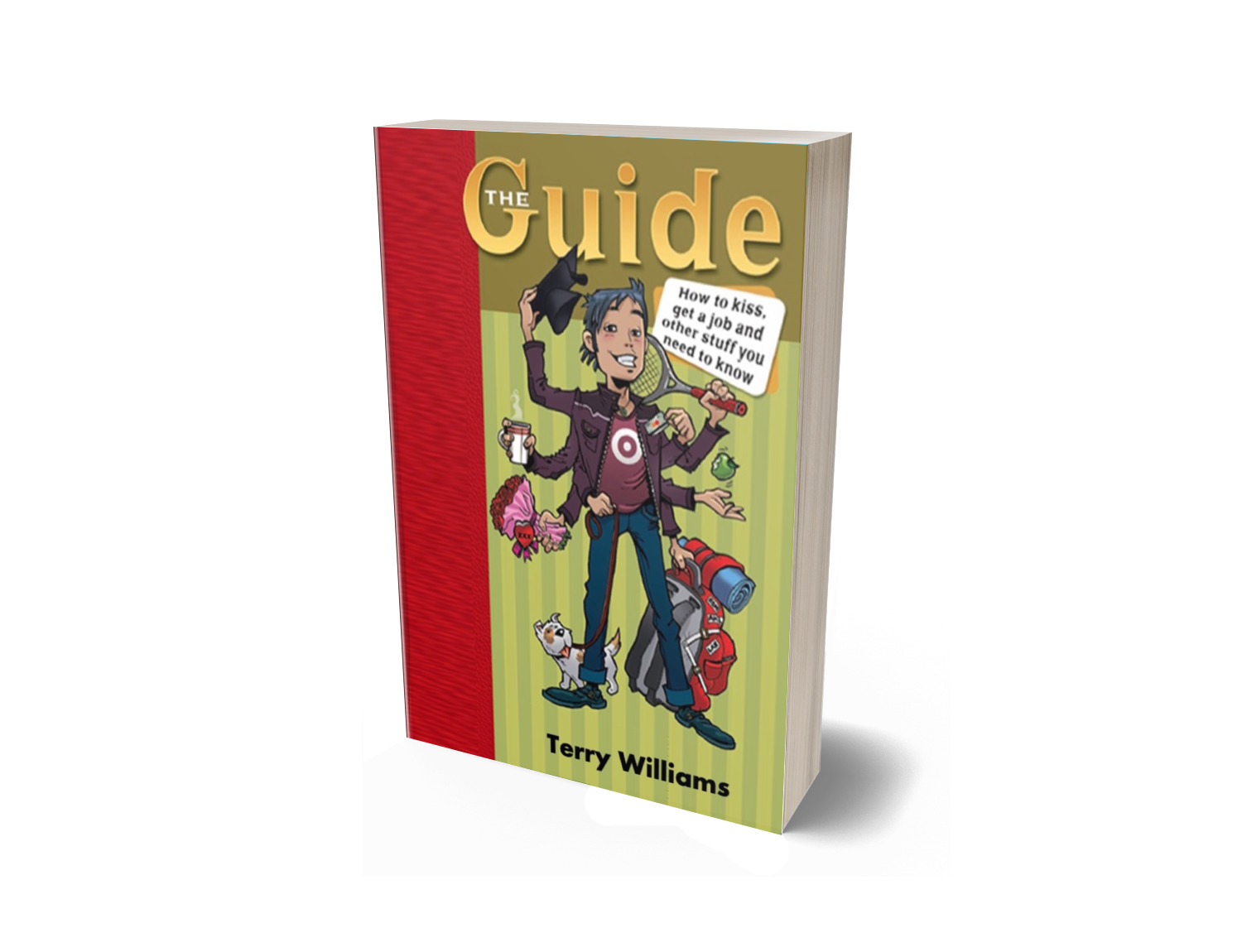Category Archives: Change
Extend Your Productive Life
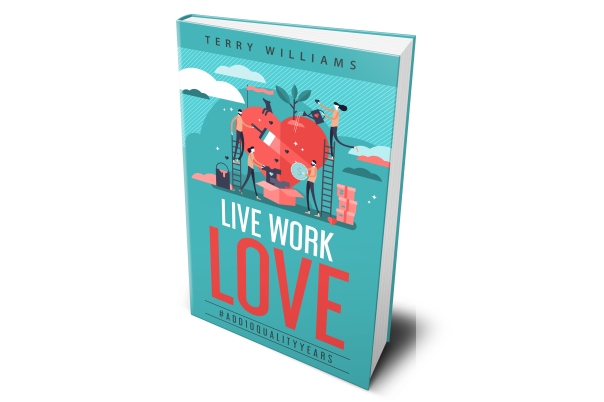
With the upcoming release of my new book, I’m updating and relaunching my earlier books. The first is ‘Live Work Love: #Add10QualityYears’.
The book is available now on Amazon, down to $1 for a limited time at http://bit.ly/LiveWorkLove .
Our longevity, health and quality of life are due 30% to genetic luck and 70% to our choices and behaviours. We’re dealt some cards and this book is about how to play the best hand, given those cards we’ve been dealt. No one wants to live forever but most of us would like to get the most out of whatever we’ve got coming. The vast majority of us would like to keep on going until we don’t, not taper off to a long unhealthy tail-end of life. Regardless of how long we have, how do we stay healthier longer, optimise our happiness and make it all worthwhile?
Reviewing and summarising much of the recent research on life expectancy, quality of life and personal productivity, this book then focuses on adding ten productive years to your work life. (Work in the broadest sense of the word.)
Currently, there is a lot of concern and uncertainty about living longer with less money, poorer health and disconnected people. The baby boomers are the most significant moneyed demographic and they’re greying at a pace. Now is a time of unparalleled affluence and longevity, yet we are faced with low quality-of-life issues driven by stress, obesity and unwise lifestyle choices. Forget waiting for that illusive magic blue pill or silver bullet when we can do a few little things every day that add up to a massive high-quality chunk of extra life that funds itself.
The book provides 12 controls for people to nudge their lives towards a better direction by influencing our physical, mental and social lives.
_____
The book is available now on Amazon, down to $1 for a limited time at http://bit.ly/LiveWorkLove .
Do You Think Your Culture Supports Critical Thinking?
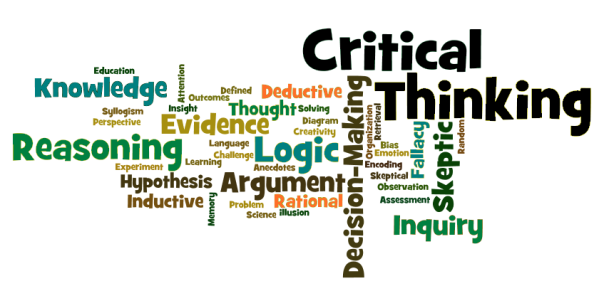
At the end of last year and into this fresh new year, I’ve been running some workshops with a big corporate on critical thinking. The emphasis is not so much about the mechanical elements like models, tools and processes, although they do prove popular. The intent is much more about creating, maintaining and supporting a culture that is friendly to critical thinking and thinkers. They’d like a ‘don’t shoot the messenger’ kind of vibe.
Like any organisation attempting to bolster its stock of skills, there are a few ways of going about it. Training is an obvious one and, as a trainer by trade, I am not going to talk you out of that. Depending on the money you’ve got to throw around as an incentive and what time pressures you’re under, another option is to recruit or outsource that skill. What if we’re not talking about the skill of critical thinking though; what if we’re talking about the critical thinking attitude? Do we recruit that? Could we outsource it? Is it even possible to train it?
Before we tackle these questions, let me start by saying the moment you reveal to any trainees a bunch of critical thinking tools, they may well have the intention of applying these on serious strategic and operational work issues and projects but that’s not the first thing they think might benefit from the tools. People default to their personal lives and decision matrices, forcefield analyses and cause-effect diagrams get applied to wedding plans, house purchases and to relationships (both forwards and retrospectively). I swear there is a fortune to be made for critical thinking trainers in relationship decision-making, although that is a workshop I definitely do not want to run!
All jokes and broken marriages aside, providing tools that normal people can see as relevant and applicable to their personal and work lives is one element of nurturing a culture. Get enough people engaged like that and you generate noise and interest. Soon there is a critical mass and a tipping point. It’s less some weird new thing that we learned on a course that we use on special occasions; it’s become more of ‘the way things are done around here’.
Yes, you can train it. Yes, you could accelerate the process by recruiting it. As long as you are adding competencies like teamwork, customer service, and problem solving to your list when recruiting, would one more hurt? The trick in the tale though is if you recruit critical thinkers or people inclined to do so, but then once they arrive it becomes clear quickly that critical thinking is not the ways things are done around here. Training is not going to solve anything other than a skill issue. What would be helpful is some role modelling and structural elements that make critical thinking part of business as usual. When newbies witness someone sticking their head above the parapet to critique something in a healthy way, what happens next is a powerful and essential indicator of the extent to which they’ll ever stick their own head up. As part of any onboarding / induction process, it would be helpful to create or immerse new arrivals into situations or simulations where people do apply critical thinking and their input gets acknowledged, addressed and perhaps even rewarded.
When you google the term ‘critical thinking’, the top three results are: what are the five critical thinking skills; what are the six critical thinking skills; what are the seven critical thinking skills. Are critical thinking skills like razors? They just keep adding another blade as some never-ending marketing game of chicken? I think the ‘five people’ should talk to the ‘seven’ people. I think a critical component of critical thinking isn’t the comprehensiveness of the toolkit nor the 5-7 skills required. I think it’s the ability to better understand the way we think and the ‘why’ and ‘how’ of getting to our conclusions. That requires a self-awareness or a desire for a self-awareness that should be aimed for in recruiting, supported during onboarding and boosted via subsequent training and practical application and reinforcement.
It’s fantastic that for years we’ve been able to walk into parent-teacher meetings in many New Zealand primary schools and see DeBono’s six thinking hats posters on the wall. (Look it up). A classic critical thinking tool being used by educators across a society to enable kids to think critically and examine ideas from differing perspectives if they choose to do so. (That’s the trick, especially during election time). Kids, the employees of tomorrow with ever changing and expanding content need to know how to think not just what to think today. I’m not sure how many boardrooms or planning spaces have those posters. The google debate rages over whether there are five or six or seven critical thinking skills but there are always only ever six thinking hats.
_____
Find out more about getting ‘Change Fit’ and advancing your own ‘Change Evolution’ at www.2dangerousthingsayear.com
‘Workplace Exaptation’

Here’s an excerpt from my latest book ‘2 Dangerous Things A Year: Your ‘Change Evolution to get ‘Change Fit”. There are four stages in a person or team’s progress in evolving their change readiness: ‘Change Sloth’, ‘Change Strain’, ‘Change Workouts’, and ‘Change Fit’. Available on Amazon in paperback or Kindle. Sign up for a monthly email summarising posts like these.
_____
One example of a practice that may indicate you’ve entered the ‘Change Workouts’ stage is ‘Workplace Exaptation’. Exaptation is an evolutionary term for adaptations that evolved for one reason but later turned out to be useful for other things. Bird feathers originally were for warmth and attracting mates. It was only subsequently that they assisted in flight. There are plenty of Exaptation examples in business and workplaces too – what I call, ‘Workplace Exaptation’. Viagara, for example, was originally developed as a heart medication.
Another significant benefit of taking a more proactive stance on change, trying new things, or doing 2 dangerous things a year, is that you test many small ideas. Even if those ideas don’t initially work out or seem to amount to much, you still have those ideas. Keep them. Store them clearly and logically so they’re retraceable for future reference.
Both my kids worked their way through high school and much of university at the same local supermarket. That store had an idea. The idea even had a name – ‘Fresh Eyes’. Originally, and very successfully, the idea was that the weekly audit walk by managers required in their departments assessing things against a prescribed checklist should be rotated so that the audit walk was still conducted each week, in turn, but a different manager did it of a different department. It lessened the danger of over-familiarity and assumptions so they wouldn’t see the wood for the trees.
The idea worked (and works) great so they could quite reasonably have left it at that and patted themselves on the back. But they didn’t. They asked themselves – if this is such a great idea, where else might it be applied. ‘Workplace Exaptation’ in action.
They took that original idea of responsibility rotation and ‘Fresh Eyes’ and used it with job interviews. My son was employed in the seafood section. He was originally interviewed by someone from HR, not because they were from HR but because it was their turn. Next, it was someone from Produce, a less-experienced supervisor. They had fresh eyes and a different perspective on my son, plus it gave the interviewer some experience. Win-win! Lastly, he was interviewed by the manager of the seafood department. It’s a robust process structuring-in diverse perspectives, yet retaining consistency with a prescribed checklist. Successful ‘Workplace Exaptation’ in action.
If you’re curious as to the extent to which your personality’s natural predisposition towards risk is contributing to being a handbrake or an accelerator on your progress, you can take my online assessment and find out. It’s at www.amIdangerous.com .
_____
Sign up for a monthly email summarising posts like these.
More at www.2dangerousthingsayear.com
This was an excerpt from my latest book ‘2 Dangerous Things A Year: Your ‘Change Evolution to get ‘Change Fit”. Available on Amazon in paperback or Kindle. 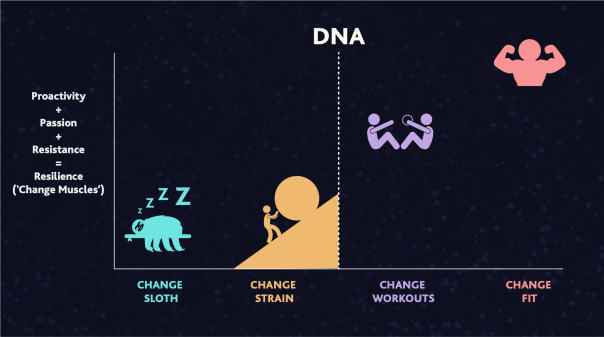
Decision-Making: Deliberation Without Attention

“Every thought on the wire leads to a fall.” – Philippe Petit, High Wire Aerialist
People feel much more responsible for their actions than their inactions. Joseph Hallinan says in his book ‘Errornomics – Why We Make Mistakes’ that at the moment you think you’re making a decision, it only seems so. It’s really long after the real decision was actually made.
This is an extract from my book ‘The Brain-Based Boss’.
Most days are made up of a series of decisions. Some are like which of three cereals should you have for breakfast or which task to start next. Some decisions might be about buying a house or signing a contract to undergo elective surgery. Maybe you agonise over every decision or just the big ones or none at all? The rest you just go with your gut feeling. Sometimes you’ll regret the decisions you make, or choose not to make, and sometimes you won’t. What’s the smartest way to make decisions or help others make them? It depends on the complexity of the decision.
Ap Dijksterhuis out of the University of Amsterdam conducted several studies on just this subject. However, like many of the researchers I’ve read for this book, they used sentences like, “Because of the low processing capacity of consciousness, conscious thought was hypothesized to be maladaptive when making complex decisions.” And they’re right but wordy. In my words, it’s hard to think about a bunch of complicated things at once.
You might like to imagine you’re a rational, logical person who’ll weigh up the pro’s and cons of each decision you make, especially the big ones, and make the best decision you can with the information you have. But what Dijksterhuis proved was quite different. He studied consumers and shoppers in lab conditions and in actual sales situations – during and after. The ‘after’ is especially important, as that is when the true quality and impact of a decision hit home.
All participants were facing a purchase decision of varying sizes. Half were interrupted and distracted during their decision-making process. All were subsequently followed up on how they felt about their decision post-purchase. The thinking was that the distraction allowed the unconscious mind, which can handle lots of complexity at once, to process the decision. It hooks into the brains emotional centres. This is where ‘gut feelings’ may come from. Plus emotional responses to the decision choices are pre-rehearsed and emotional responses to each assessed by your brain with you not consciously aware of them.
His findings were that “simple choices (such as between different towels or different sets of oven mitts) indeed produce better results after conscious thought, but that choices in complex matters (such as between different houses or different cars) should be left to unconscious thought. Named the ‘deliberation-without-attention’ hypothesis, it was confirmed in four studies.”
Conscious thought focuses attention on whatever factors manage to squeeze themselves into our limited conscious mind at the time. That distorts perception and can over-inflate the relative importance of certain factors.
Researcher Loren Nordgren joked about Rene Descartes’ famous quote, “I think therefore I am.” That was all well and good but was he always happy with the shoes he chose to buy? Over-thinking doesn’t make for good decisions when it’s not a simple decision.
I’m not suggesting that lack of attention is a good thing. Otherwise we may as well put teenagers in charge of all the important decisions. Most can usually (always) be relied upon to provide the ‘without attention’ component! No, it has to be a bit more structured than that.
Both studies look at what might be called intentional self distraction. They contrasted three approaches to decision-making: make an instant choice, long list of pro’s and cons, briefly distracting the conscious mind. The latter was the most effective and, down the road a bit, evoked the least regret.
If you just skim read Malcolm Gladwell’s book ‘Blink’, you might assume that instant decisions are often best. But on closer examination, I reckon Gladwell agrees with Dijksterhuis. Both reject the supposedly time-tested tradition of logically weighing up over a period of intense concentration a list of pro’s and cons. It takes ages and delivers a poorer result.
My shorthand version of a useful process is:
1. Introduce the problem and range of solution options
2. Carry out a pre-set 3 minute distraction activity.
3. Return to the problem and / or the options. Make your choice.
4. Live with it.
So, what?
I had it drummed into me and I subsequently preached to those I trained about the commonsense of structured event interviewing as a tool for recruiting. I was schooled on the value of decision matrix spreadsheets when evaluating complex contract tender responses. Does this research mean those formal processes have no value? No. Recruiting and big contracts are expensive and the consequences of mistakes are significant. At the very least, you may need to retrospectively justify your decision. (ie Cover your butt.) I think the lesson of deliberation-without-attention is that it pays to try both approaches. If they don’t match, you might need to do some more research and ask some more questions.
_____
Check out my new motivational presentation at http://www.2dangerousthingsayear.com
More ideas at http://gettingbetterbuyin.com/
To what extent are you seeing what you want to see and disregarding the rest?

Meta-cognition is a fancy term for thinking about how we think. We don’t often do it because we’re all so caught up in actually thinking or, more probably, doing stuff with as little thought as possible. (I might be judging myself on that point). The mindset and beliefs we have got us to this point and if this point is OK or better, there are risks in changing and challenging. But things won’t get better if you don’t.
In short, one answer is to deliberately surround yourself and seek out and expose yourself to information sources that you know will challenge you. I’m not suggesting you live in a perpetual state of stressful heightened awareness and self doubt but at the very least you gotta have someone who’ll call you out. Diversity is the broadest sense is even better. Source from beyond your bubble.
You won’t have time to think about everything, after-all that’s why you revert to confirmation bias to begin with, but perhaps approach conversations with an open mind. Don’t be so quick to judge.
Surround yourself with different types of people. Don’t label yourself. Be well-rounded and willing to hear different types of opinions on politics, religion, and life in general. This is a sign of intelligence not passivity.
It takes incredible mental strength to challenge your own deep-seated beliefs. Stand by your convictions, of course, but just realize some of that just may be rooted in confirmation bias. Be open. After-all. life is full of the gray stuff. We wish it were simple. This is right. That is wrong. It doesn’t always work that way. That’s why it’s good to be aware. Self-aware.
This article explains confirmation bias and some more thinking around addressing it.
– – – – –
More ideas at http://gettingbetterbuyin.com/
The Smoke & Mirrors Of Tech Promises

Before my days as a trainer, speaker and author came along, I served some time on the periphery of the telecommunications industry and in some Information technology projects. I was usually the non-technical guy who acted as translator for the customers / users / muggles. I’d facilitate meetings, co-draft specs, and draft user documentation and training. I learned a lot, not the least of which is that I did not wish to do that ever again.
I can be overly keen sometimes. I’m that guy. An executive recruitment firm once reported on me as being “infectiously enthusiastic”. I’m taking that with all the good graces and positivity of a description that includes the term “infectious”. But I get it. One of the things into which I launch myself with enthusiasm is tech. And, one of the learnings from my time in the tech trenches is that there is a lot of smoke and mirrors. To temper the odds of any future disproportionate or unwarranted enthusiasm on tech or any subject, I like to look back in time on the internet. In 2007, what was being touted as the next big thing, is it big now, or is it even an actual thing at all yet? What was the much-hyped HR tech of ten years ago? Is it here now and is it kicking digital butt?
I feel like I want to draw up a bingo grid and include terms such as ‘big data’, ‘UX’ and ‘disruptive’. Were they on the cards ten years ago or are they just around the horizon? If you’re ever lost in a desert, you’ll know that the only thing just around the horizon is another horizon. We’ve all been there. I only do it for the hallucinations. If you’re ever lost in a dessert, well done.
There is one prediction I found most often from back in 2007 that seems to have played out solidly today. I’ll quote it directly, “Fear automation not outsourcing”. It’s kind of tech-facing, although not specifically relating to HR tech. Unless you work in HR, which as readers of this publication, you almost certainly are.
There is a pill bottle today that has enough tech in its lid to verbally remind people to take their meds. Convergence is a thing. It happened with TVs and computers, with phones and everything else, and, according to some political spokespeople, with microwaves and spy cameras. With HR tech, the time is now or soonish for talent management to hybreed with ERP. I’d also like to copyright my word “hybreed”. Another key battleground for tech folk generally, including HR, is UX or User eXperience. Finally, users are no longer the doormats we were back in 2007. Now, the people poking screens matter. Now, poking screens actually does something. I’m not sure why anyone would’ve been poking their screens back in 2007?
Taps are replacing clicks as mobile devices are the means by which we all do our thing. When Bill gates first mooted “a computer on every desktop”, that was seen as a boon. Now, computers on desktops are a hassle unless you’re a power gamer. Most HR professionals shouldn’t be power gamers. Least not at work anyways. Especially don’t recreate your organisation’s people using Sims or some kind of role play gaming software. The last thing we need is HR folk getting all ‘Game Of Thrones’ with their talent management. I got my hair cut yesterday by someone talking about their kids at school and “achieved, merit and extinction”. I think she meant “distinction” and it probably should’ve been “excellence”. We don’t want HR tech driving extinction but we probably do want HR tech driving distinction. This is where big data analytics comes in.
Big data is definitely a reality but the next thing of note is the analytics to make finessing it and extracting value from it viable, practical, ethical and efficient.
My favourite HR tech is in the L&D space and it isn’t MOOCs (Massive Open Online Courses) although they are great. It’s micro-learning – what you need, where you need, when you need it. People forget things they don’t use much so having a ‘library’ of resources online available via mobile devices is an excellent adjunct to traditional training. I had an outside lightbulb that had shattered with no way to grip it to twist it out. Via YouTube, I found a ninety second video from Bosnia with the solution – stick a potato in the broken bulb and twist. I lived to tell the tale and that is useful L&D tech.
My main worry with tech is that they have developed software (and this is real, although still in the early stages) that can detect sarcasm in the written word. Wow, it looks like they were right in 2007, I do have to fear automation.
——
Managing Change: Elephants, Chickens and Eggs
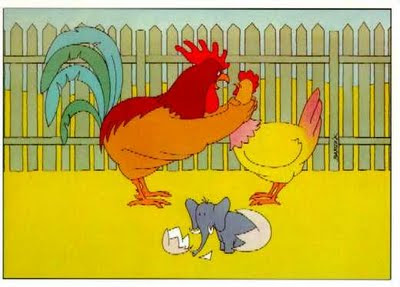
I’m currently working with a company that wants to implement a sustainable and managed programme of organisational storytelling. They’re convinced it isn’t silly nor is it just a ‘flavour of the month’ magic leadership blue pill. They see it as a fundamental human communication tool and they’d like to leverage it for their own communication strategy’s objectives and enable their people to use it to better move people around them to change. They had no problem with the concept, the practice or the potential cost-benefits of organisational storytelling. Their primary concern was that it would become just another change effort that didn’t stick.
In that regard, their concerns are warranted. Something as uncommon and potentially nebulous such as organisational storytelling is no different from any large-scale change project like a force-fed software roll-out.
Research from psychologist Jonathan Haidt, later popularised by Chip and Dan Heath in their book ‘Made To Stick’ focused on the power in change situations of combining the rational and the emotional. They’re the ones who got the ball rolling on the phrase ‘The elephant and the rider.’ It’s all a wonderful oversimplification and neuro-scientists must be rolling in their hammocks but it’s a simple and useful mental model. The elephant is your emotional brain. The skinny feeble dude on top of the elephant is the rider – your rational brain. The rider knows the rules and your goals and what’s good for you in the long run and learns from experience. The elephant wants what it wants. The rider will see a pile of chocolate and say that you shouldn’t have any but could probably have a little bit. The elephant will say it can’t hear you because of the noise it’s making eating all this chocolate.
Apparently, a key to success in life generally and change in particular is to get our elephants and riders working together. The third element is to ‘shape the path.’ We need to give them a degree of autonomy but with a limited range. Some of you will be thinking that this makes sense. Some of you will be thinking that elephants can’t talk. That’s just your driver speaking.
One of the things that constrains or delays change is paralysis by analysis. People obsess over making the right decision and end up making no decision or a too late decision. There’s a classic study where researchers set up stalls at several farmers markets. Half the stalls offered three jams for sale with three taste test pots. The other half of the stalls offered twenty four jams and twenty four taste test pots. Which stalls do you think sold the most jam? Far and away the three choice stalls sold significantly more jams. Haven’t we been conditioned to think that we want choice? That more choices are good choices? You might think that but that’s not what the research shows.
Why is that? Regret, or the potential for it, is a powerful driver and constrainer of human behaviour, although not so much for elephants. We want to choose the best jam. The chances of making the best jam choice out of three are pretty good, especially if the three choices are very diverse, say, a berry jam, a marmalade and something with low or no sugar. (Ha, just kidding. I think stevia is straight out of Professor Snape’s lab at Hogwarts and causes flavour to become invisible.) But, with twenty four options, many quite similar, those odds of making the best choice plummet. And our brains, emotional nor rational, don’t like that. We probably wouldn’t construct elaborate decision matrices on complex spreadsheets for jams but that’s exactly what we do for a lot of decisions are work.
John P. Kotter is the world’s leading expert on change. He’s got that middle initial thing going on so there’s that for a start. Seriously, his book’s a classic and I highly recommend it. I MC’d his off-sider from Boston at a conference recently and I was impressed by their research-based but very practical structured approach. They have an eight-step process; Look it up. The first step to minimising the chances of your change initiative failing is to create a sense of urgency. If paralysis by analysis is a brake on change efforts then creating a sense of urgency is smart. Go on, the idea is only available for a limited time!!
They say we’ll never know which came first – the chicken or the egg. I say it’ll become a lot clearer once KFC starts serving breakfasts. Is it that restaurants don’t offer a wide range of vegetarian meal options because diners don’t order a lot of vegetarian meals or do diners not order a lot of vegetarian meals because restaurants don’t offer a wide range of vegetarian options? It’s a chicken and egg situation.
——
###END###
Coaching: Sack The Coach

My understanding of coaching is that it is a bit like art – you may not be able to define it but you know it when you see it. Or was that pornography? Some people try and narrow down its definition by specifying what coaching is not. Coaching is not training, leading, managing, facilitating or mentoring. Training implies that the trainer knows something that the trainee doesn’t know but needs to know and it’s up to the trainer to fix that. Managing is about tasks and things and almost certainly has an actual or implied hierarchy and power imbalance. Leading is about hearts and minds, providing inspiration and motivation to someone, who in the leader’s opinion, requires more motivation but seems to be unable to generate it themselves. Facilitation involves directing or controlling an individual or group. Mentoring demands a relationship between an experienced expert and someone inexperienced and / or inexpert who wants to do or be what the mentor does / is.
A common metaphor for coaching in business is coaching in sport; it’s easy to say that. People get it quickly but it’s not a fitting comparison. Sports coaches are the boss. They’re in charge. They’ve got extensive expertise and experience. More likely than not, they’ve been in the team being coached and after their playing career, they’ve logically moved into coaching. Though not every player has been able to make that transition.
Business coaching or professional development coaching are different. There’s no power imbalance (or there shouldn’t be.) There’s no expertise imbalance. A coach is an independent force there to observe, listen, reflect, probe, prompt. A coach probably doesn’t know the answers or have the direct experience of the issues and opportunities of the person being coached. You need permission to coach. The coach is not in control. The coach need not have all the answers and better not pretend that they do. The coach does need to keep the person being coached honest, focused and aiming at development that is genuinely necessary and attainable.
Most employees, most of the time, will do what they are directly told to do. That’s management and if that is all there was, then managers would have to be omnipresent because that’s the limitation of the command-and-control hierarchical power-based model. The reality is that managers have lots to do and places to be. Tom Peters wasn’t wrong when he said that the true test of your leadership is what happens when you’re not around. (Unless it wasn’t Tom Peters who said that? In which case, it’s me who’s wrong. Leave Tom Peters alone.) The baseline assumption behind coaching is that it’s ongoing, progress is expected, that progress is the responsibility of the person being coached, and the coach is responsible for the coaching process. Ongoing professional development can genuinely benefit from an effective and frequent coaching programme. A Bersin study found that companies with an effective and frequent coaching programme improve their business results by 21 percent as compared to those who never coach.
Can a manager also be an effective coach in an employment context? Sure, why not? They’re doing everything else. Bosses can wear rotating hats with labels like ‘coach’, ‘manager’, ‘leader’ or whatever and that’s probably pragmatic. But, there’s a value especially for coaching in a real and / or [perceived independence, coupled with a perspective and helpful naiveté born of being an outsider. Sometimes, it’s worth hiring someone to do the coaching. (I don’t do much coaching myself. It’s hard work. Genuinely that’ll put me off most things. But I do some coaching. Client companies sometimes ask me to coach after I’ve spoken, facilitated or trained. They like the other things I do, the results I get and just plain like me. ‘Like’ is probably the wrong word. Both the client company and the individuals being coached have to trust and respect the external coach. There have definitely been times where whatever emotion was being directed at me, it wasn’t ‘liking.’)
Coaches are about ‘ask’ not ‘tell’. A coach’s focus is the employee not a task. Coaching is not fixing anyone. Coaching has clear accountability. Coaching can be scheduled but it’s more an ‘as need when needed’ thing. Coaching is about a set of processes, more than it is about a coach. That said, a coaching toolbox is useless, and sometimes dangerous, if operated by someone calling themselves a coach who lacks the wisdom to know when to use which tool. In that regard, coaching is like every single DIY activity I’ve ever done that resulted in a heated towel rail power switch being installed upside down, a door handle going in inside out or a chainsaw that’s now more functional as a doorstop.
Coaching is a journey, like ‘Lord Of The Rings’ was a journey. And like ‘Lord Of The Rings’, not everyone finishes the journey. And if you’ve got giant eagles available for your coaching process, use them right away, not at the end when otherwise all else seems lost. Duh.
——
###END###
Workplace Culture: Cultural Evolution

There is no ideal model workplace culture and no single path to get there.
I’m writing a new book and am at the research stage. The most obvious visible behaviour for me at this stage is not writing. So much reading! The book will be about adding ten productive years to your life and a section will be about extending our healthy lifespan. As a result, I’m reading a lot of inherently contradictory information, much like we’re all lambasted with constantly. Eggs are good for you. Eggs are bad for you. Some bits of eggs are good for you and some bits are bad for you. Some eggs should face trial for war crimes. That sort of thing.
There is some absolute quackery about miracle cures for aging that, no doubt, someone will try and sell you in pill form very soon. Telling us that there is a restorative compound in red wine is useful. Finding out that we’d need to drink a bathtubfull a day to get enough of that compound is less helpful. I’d need to refer back to my notes but I may have read somewhere that our wine limit should be 2 glasses a day. Perhaps there is a market for glasses the size of bathtubs? That is definitely one bathtub where you’d want to utilize a non-slip bathmat. Perhaps several, for the footpath for your long walk home?
I’m keen to believe the probiotic yoghurt propaganda. (The theme of this month’s issue of Employment Today is, after all, culture.) In case you’ve missed the infomercials, here’s the downlow on the lowdown bugs in our guts. There are bugs in our guts. There are bugs all over our bodies. (And, no, I’m not talking about the imaginary ones you’ll hallucinate when you try to cut down on your two-bathtubs-a-day red wine habit.) There are bad bugs which is why we should wash our hands and good bugs which is why we should not smother ourselves inside and out with disinfectant drugs and chemicals. For decades as a society, we’ve been pointlessly amping up on anti-biotics for sniffles and viruses which is useless and increasingly diminishing the effect of antibiotics and breeding antibiotic-resistant hospital-loving superbugs. Antibiotics also fail to distinguish between good and bad bugs, killing both in a broad spectrum kind of way.
So, the sales pitch goes that this lifestyle, plus our sad, beige diets has led to imbalance in the gut bug world and a lot of our ailments can be attributed to this. Please buy our brand of probiotic yoghurt or pills. I’m prepared to partly accept this because I like yoghurt and I’m always a lot more open to new information when it in no way conflicts with my existing beliefs and behaviours. You know, like virtually everyone.
The thing I didn’t know about our gut bugs is that we don’t all have the same ones or the same mix. At some point in our early development, we get colonised and that type of bug is ours for life. It’s a bit like blood types with types A+ and O-. Some researchers are mooting that in the not-too-distant future, there will be probiotic cafes where you can get customised smoothies with the gut bug that’s right for you. I’m guessing that they’ll get the marketing department working on a better brand name than ‘gut bugs.’ (GB?) Knowing my own gut bug type is currently a level of self awareness that I have failed to achieve.
This might be the longest bow I’ve ever drawn, or the most tenuous of metaphors, but, in a way, isn’t workplace culture a bit like this?
So many books, blog posts, LinkedIn articles and conversations revolve around the premise that there is this mystical, magical and elusive one-right-way to generate a successful results-oriented, customer-focused, highly engaged workplace culture. Implicit is that there is one ideal model culture to which to aspire. There isn’t. It depends.
Like gut bugs, workplace cultures need to evolve. Like the probiotic cafes of the future, we need to know what workplace culture we want before we start any efforts to build one or improve one we got stuck with. And, we need to stop poisoning our workplace cultures, killing the good alongside the bad, with broad spectrum shotgun efforts.
How anyone thinks there can be a uniform and constant workplace culture is beyond me. Just driving around with your eyes open displays sharply that contemporary New Zealand is multi-cultural and increasingly so, in the more usual demographic sense of the term. Workplaces are reflecting diverse racial and national cultures and you can throw in age, attitude and other demarcations too. The point here is that there is no point – not a single point anyway. What’s needed is an openness amongst employers to diversity, coupled with an acceptance that the now and the future need a lot more personalised approaches to workplace culture than a ‘one-size-fits-all’ approach.
Is there a red wine yoghurt? Asking for a friend.
——
###END###
Change: Spoiler Alert!

It’s the uncertainty of change and the way it’s gone about that causes the problems, not the change itself.
You know when you’re in a conversation and the person you think you’re in a conversation with is having a different conversation, even though you’re both speaking with each other, and at some eventual point, one of you realises before the other that you’re talking at cross purposes? At that point, you have to either stop talking and backtrack, or you have to interrupt them. You know that look in their eyes just before they get what’s been happening, that confused, almost pained expression? Remember that face. That’s the face of change.
I recently needed to visit a firm that dealt in air conditioners. I was told it was in William Pickering Drive. I didn’t bother getting any more specific details such as the name of the firm or the actual street number. I drove along and saw in the distance a big red sign saying “34C” and a much smaller black and white sign saying “Climate Control.” In a brief conversational exchange with someone in passing in the reception area, I glibly commented that “34C” was a clever name for a firm dealing in climate control, although probably a tad warm for my tastes. I wouldn’t say what followed was a heated exchange (pun intended) but there was certainly escalated confusion, as I was sure the name of the company that dealt in climate control was “34C” whereas the reality and the other person’s perspective was that the company was called “Climate Control” and “34C” was their street number.
At some eventual point, the other person realised what had been going on and interrupted me. The few moments either side of that was the conversational equivalent of when you’re sitting in a chair and leaning back and you get to a point and you don’t know if you’re going to fall or stop yourself falling. I’m sure there was a confused and almost pained expression on my face – the face of change.
The theme of this issue of Employment Today is ‘Managing Change.’ It’s the uncertainty of change and the way it’s gone about that causes the problems, not the change itself. Research shows that worrying about losing your job causes greater ill health than actually losing your job. Sarah Burgard from the University of Michigan has shown that job insecurity (fear) causes more illness than the eventual reality of unemployment.
So, what can canny employers do to prevent, or at least mitigate, any harm caused by potential change, actual change or the perception of the risks of possible change in the minds of the employees to which the changes happen? Let’s look to Hollywood for some answers.
With the synchronisation in recent years of movie release dates around the world and the tsunami of streaming and downloading or movies, a lot of our friends are seeing a lot of movies before we do. And, good friends that they are, they’d love nothing more to share their experience with us and encourage us to see their recommended films. The term “Spoiler Alert” has thus fallen into common usage as our good friends give us notice if anything they are about to say might ruin a critical story point or narrative twist.
This is the lesson from Hollywood for employers – DO THE OPPOSITE!
Provide spoilers at each and every stage that you can and repeat them more often than you think is necessary. The less uncertainty the better when it comes to managing change. It’s the uncertainty that causes the problems and damages the relationships and the mental and physical health. Change isn’t going to stop – both the change you’re deliberately and proactively provoking and the never-ending stream of reactive changes in today’s economy and workplaces. That’s the reality and will continue to be so. What you can control to a greater degree is the level of uncertainty. So, sprinkle out those spoilers like salt on takeaway French fries (way more than a normal person thinks is necessary.)
I’m performing in the NZ International Comedy Festival this year in a show called ‘The Grin Reaper.’ While it’s an hour of stand-up, its theme is about how to live longer, based on a great book on longevity studies called ‘The Blue Zones’ by Dan Buettner. Learning some life lessons from those who’ve lived the longest, they’ve distilled the research down into nine key things you can do to add ten quality years to your life. ‘Having purpose’ was one. ‘Wine at 5’ was another so that’s good news. A couple of others related to ‘a sense of belonging’ and ‘handling stress.’ That’s where change presents itself. Managed badly, change can literally affect the quality and quantity of our years. Managed well, it can enhance both. Also, you should totally watch the movie ‘The Sixth Sense.’ It’s not so much about longevity but definitely about spoilers.
###END###
